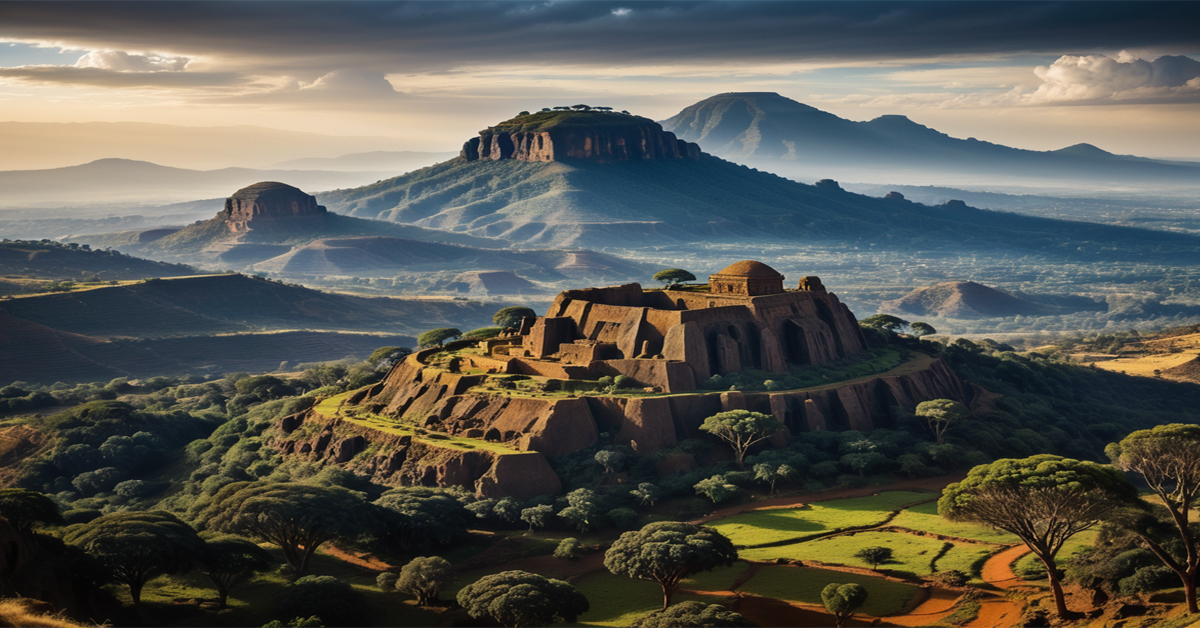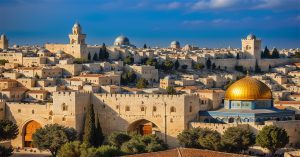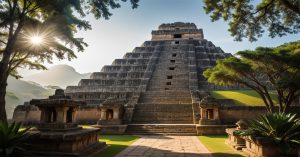Ethiopia: The Cradle of Humankind and a Haven for Spiritual Seekers
Discovering Ethiopia’s Rich Spiritual Heritage
Ethiopia, often referred to as the cradle of humankind, is a land of ancient traditions, deep-rooted history, and profound spiritual significance. This East African nation offers a unique blend of natural beauty and cultural heritage, making it a haven for spiritual seekers. From the rock-hewn churches of Lalibela to the ancient city of Axum, Ethiopia’s spiritual sites are a testament to the country’s rich religious history.
Powered by GetYourGuide |
The Rock-Hewn Churches of Lalibela
A UNESCO World Heritage Site
The rock-hewn churches of Lalibela are among the most remarkable religious sites in the world. Carved directly out of solid rock, these eleven medieval monolithic churches have been a UNESCO World Heritage site since 1978. These structures are not only architectural marvels but also hold immense religious significance for the Ethiopian Orthodox Church.
A Journey Through History
Built in the 12th and 13th centuries under the reign of King Lalibela, these churches were intended to be a “New Jerusalem” for Christians unable to make a pilgrimage to the Holy Land. The most famous of these is the Church of St. George (Bete Giyorgis), known for its unique cross-shaped design. Visiting Lalibela offers a deep spiritual experience, as one can witness the devotion of pilgrims who travel from far and wide to pray and celebrate their faith.
Axum: The Heart of Ancient Ethiopia
The Obelisks of Axum
Axum, the ancient capital of the Aksumite Empire, is another pivotal site in Ethiopia’s spiritual and historical landscape. The stelae (obelisks) of Axum are towering granite monuments that date back to the 4th century. These obelisks are believed to mark the graves of ancient rulers and are adorned with intricate carvings that reflect the artistic prowess of the Aksumite civilization.
The Ark of the Covenant
Axum is also reputed to be the final resting place of the Ark of the Covenant, the sacred chest that, according to the Bible, houses the Ten Commandments. The Church of Our Lady Mary of Zion is said to be the guardian of this holy relic. Although the Ark itself is not on public display, the church remains a significant pilgrimage site, attracting thousands of visitors each year.
The Monasteries of Lake Tana
Island Monasteries
Lake Tana, the largest lake in Ethiopia, is home to numerous ancient monasteries scattered across its many islands. These monasteries date back to the 14th century and are known for their secluded and tranquil environments, making them ideal for spiritual reflection and meditation.
Ura Kidane Mehret
One of the most renowned monasteries on Lake Tana is Ura Kidane Mehret. Located on the Zege Peninsula, this monastery is famous for its beautiful murals depicting biblical scenes and the lives of saints. The serene atmosphere and the rich history preserved in these monasteries provide a unique insight into the spiritual life of Ethiopia.
Debre Damo Monastery
A Monastery in the Sky
Debre Damo Monastery, perched atop a sheer cliff in the Tigray region, is one of Ethiopia’s most isolated and inaccessible spiritual sites. Only men are allowed to enter, and the only way to reach the monastery is by climbing a rope up the cliff face. This challenging ascent is a testament to the devotion and determination of the monks who live there.
Ancient Manuscripts and Religious Artifacts
Debre Damo is renowned for its collection of ancient manuscripts and religious artifacts. The monastery’s library houses some of the oldest and most important texts of the Ethiopian Orthodox Church, providing invaluable insights into the country’s religious heritage.
The Spiritual Significance of Ethiopian Timkat
Celebrating Epiphany
Timkat, the Ethiopian Orthodox celebration of Epiphany, is one of the most vibrant and spiritually significant festivals in Ethiopia. Held annually on January 19th, Timkat commemorates the baptism of Jesus in the Jordan River. The festival is marked by colorful processions, religious ceremonies, and the reenactment of the baptism, drawing thousands of participants and spectators.
The Tabot Procession
A central feature of Timkat is the procession of the Tabot, a replica of the Ark of the Covenant, carried by priests from churches to nearby bodies of water. The faithful follow the Tabot, singing hymns and celebrating throughout the night. This festival not only highlights the deep spiritual devotion of Ethiopians but also showcases the rich cultural traditions that have been preserved for centuries.
Conclusion
Ethiopia’s spiritual sites and religious history offer a profound journey into the heart of one of the world’s oldest civilizations. From the awe-inspiring rock-hewn churches of Lalibela to the ancient city of Axum, the monasteries of Lake Tana, and the secluded Debre Damo Monastery, each site provides a unique glimpse into the spiritual life of Ethiopia. Whether you are a pilgrim seeking a deeper connection to your faith or a traveler interested in exploring ancient cultures, Ethiopia promises a rich and transformative experience.




